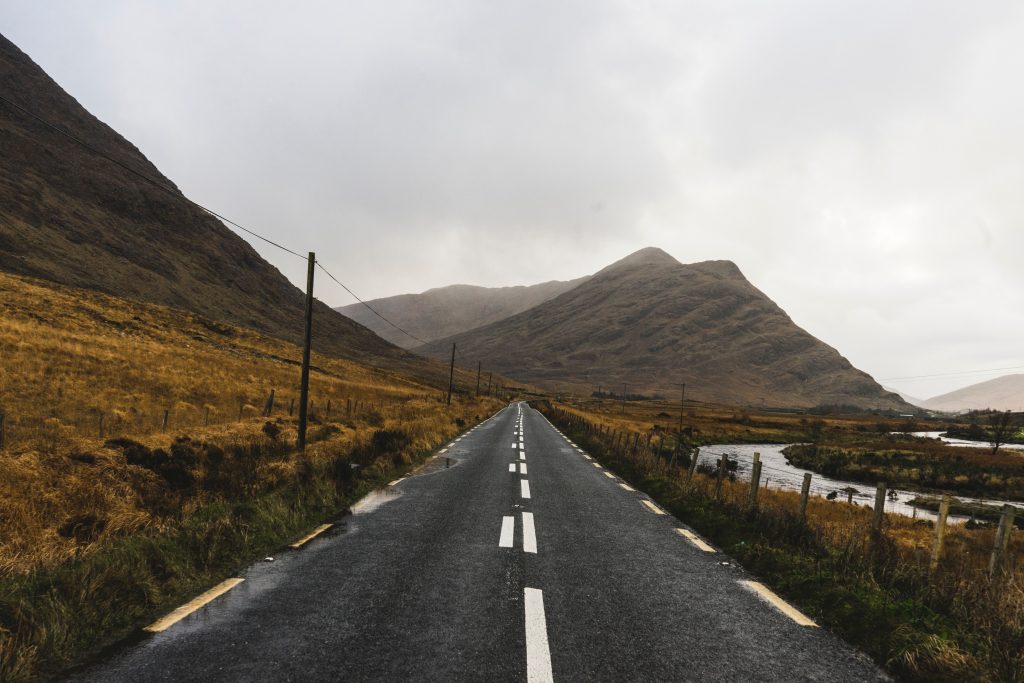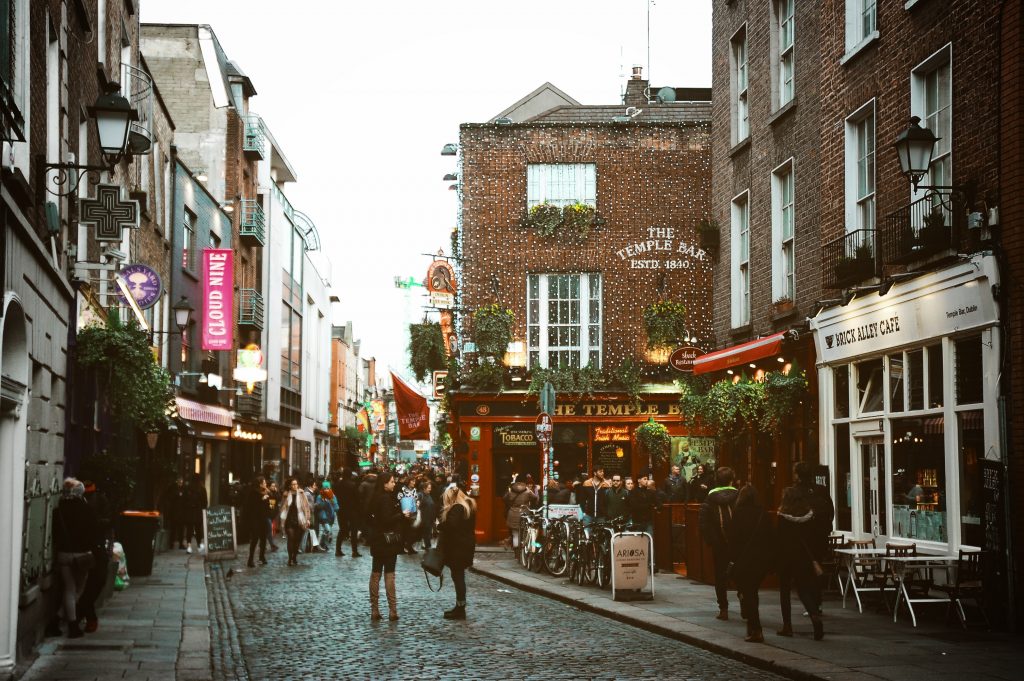I recently returned from a trip to Ireland, where I bravely took to the roads and drove on the left-hand side. Before traveling I read a few tips about ways to maximize safety and tips to remembering everything we’ve always learned, just in reverse. After surviving driving on the left and living to tell the tale, I am here to fill you in with all my tips and tricks on staying safe on the winding Irish roads. Although my experience pertains to Ireland specifically, most of these tips will also pertain to the UK and Australia, or any other left-handed driving countries.
- Stay Towards the Center of the Road
When driving in the United States the driver sits towards the center line, this is the same in Ireland. There is a pull to stick clear of the center line when driving on the left-hand side because traffic is coming at you, but with the small roads, where cars can park and people can walk, you have much more control of your space when you stay towards the center line. After hitting a few curbs, this was a big one I was constantly checking myself for. - Left is Tight, Right is Wide
I read this little saying before I left for my trip and it was a huge help. When turning it is always good to remember that a left hand turn is tight, where as a right hand turn is wide. Another step is to remember when you are turning right to turn into the far (left-hand) lane, as you can be inclined to still turn into the right hand land, just simply from muscle memory.
- Go Slow
It seems easy, but it can feel intimidating going slow, especially on country roads when everyone is whizzing past you. Just go at your own pace. There were times I was going 20 km under the speed limit, but I was doing it at my own pace and it kept me feeling safe and in control on roads lined with large stone walls and lanes that were hardly wide enough for one car, let alone two. - Stop at a gas station and pick up a big red “L”
I read this as a tip online before traveling, that in Ireland new drivers add this window cling to their cars to let drivers know they are Learners. Although you are not a Learner in the country, you do fall into the category, since you probably aren’t a seasoned left side of the road driver. Cars tend to be more understanding of your speed and hesitation when you display the L in your car. I believe it was only a few Euro and they were available at every single gas station I stopped at. - Go Clockwise in Roundabouts
Growing up in Wisconsin I became very used to roundabouts as they are quite prevalent, but if you aren’t used to these they can be confusing even when you are in the U.S. In Ireland you enter the roundabout going to the left. There are often more than one lane entering the roundabout, but local drivers tend to stick to the left lane no matter what exit they are taking out of the roundabout. Another tip for this is to watch for the roundabout signs that are displayed just before the roundabout. You need to know which exit you are taking and sometimes they have 2, 3, or 4 options. And whatever you do, do not stop in a roundabout. - DO NOT DRINK AND DRIVE
This seems like an obvious one, but in the U.S. we are able to drive after having a drink, depending on body size and type of beverage. In Ireland (check other countries before you travel) the limit is trace amounts in your blood or zero, depending on what you read. Essentially it is not safe to even have one drink and then drive, so make sure before you do a brewery or distillery tour you designate a driver. - Roads are Generally for Two Way Traffic
You will find this on country roads and driving through the mountains. Often times there is hardly any room to pull over to let a car go by, so make sure you are taking it slow and watching for cars approaching. You may have to back up to let a car pass, which can be intimidating on the small roads. - Have Cash/Change with you
There are tolls every so often when driving in Ireland and my rental car did not have a automatic toll payment in the car. Having some euro and coins around to pay tolls is necessary and will save you some grief at the toll lines. - Get an Automatic Vehicle
Even if you are used to regularly driving a manual in the U.S. with all the newness of driving on the left side of the road, there is no point in adding another element of confusion when having to shift with your left hand. I drive a stick at home, and I heeded this advice as well. With the amount of extra thinking you need to do to just simply turn your car you will be doing yourself a disservice as a first time driver in adding that additional element. Although the price for an automatic car is higher than a manual it was well worth it. - Watch for Road Signs
Many of Ireland’s road signs were simply just pained on the road “stop”, “do not enter”, etc. Make sure you are paying attention to what is painted on the road and what is written on signs as it is often unclear who has the right of way. - Animal Crossing
From sheep and cattle to a neighborhood dog animals are quite prevalent on the roads in Ireland. Taking those winding roads slow is a benefit to you for many reasons, one of which is because you may need to come to a screeching halt to avoid hitting a heard of sheep. Animals are quite used to the traffic in Ireland, but they definitely know they have the right of way.



